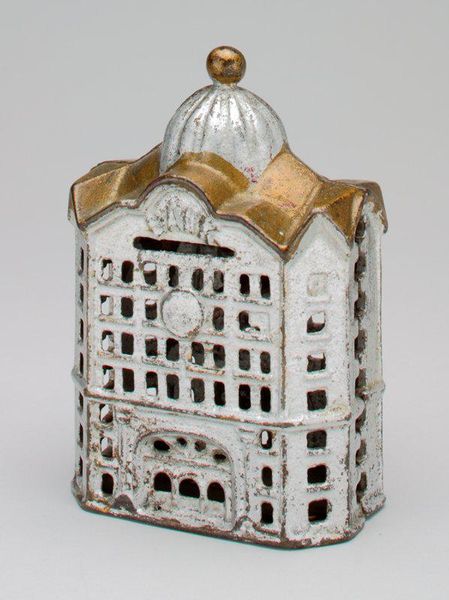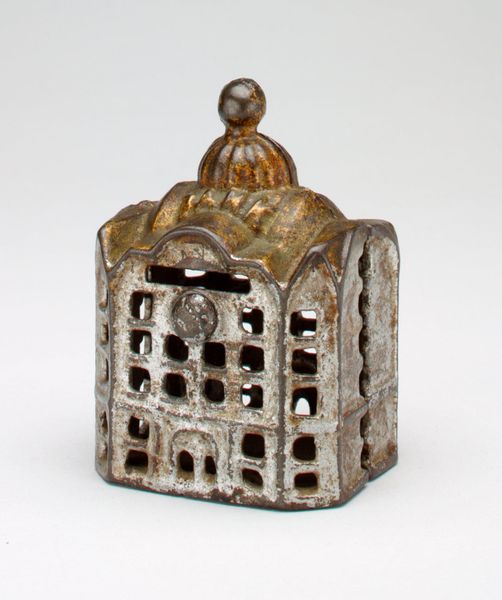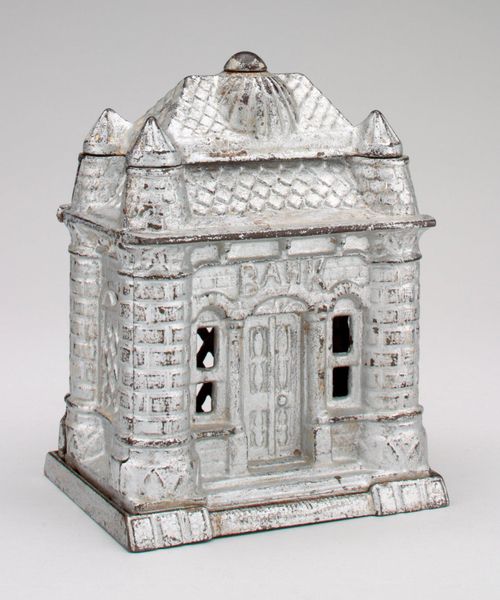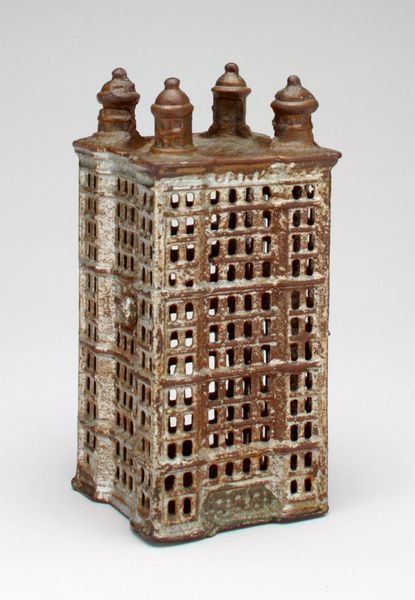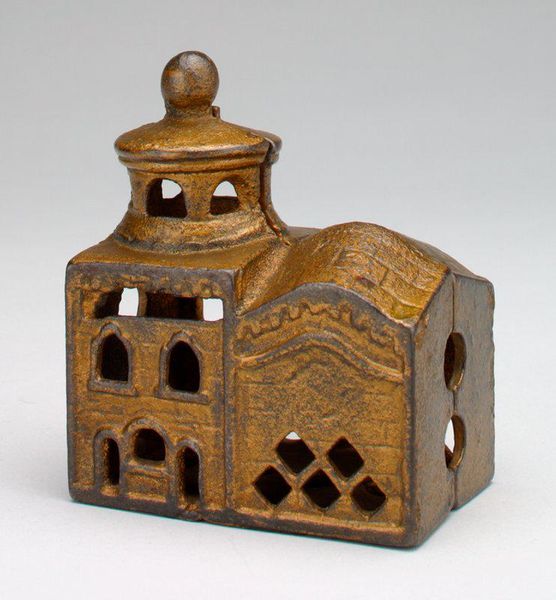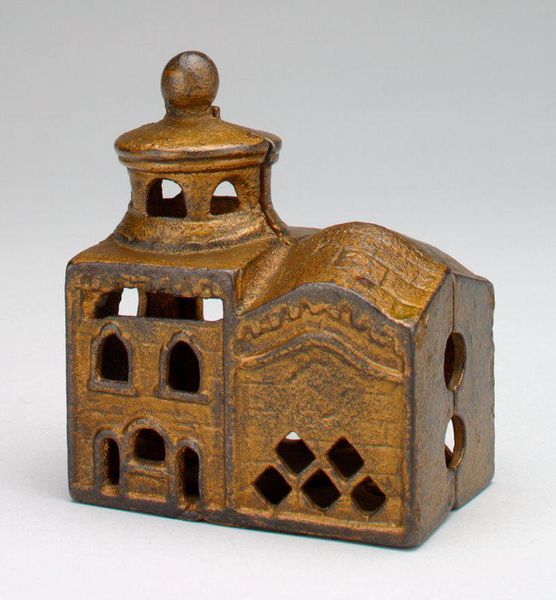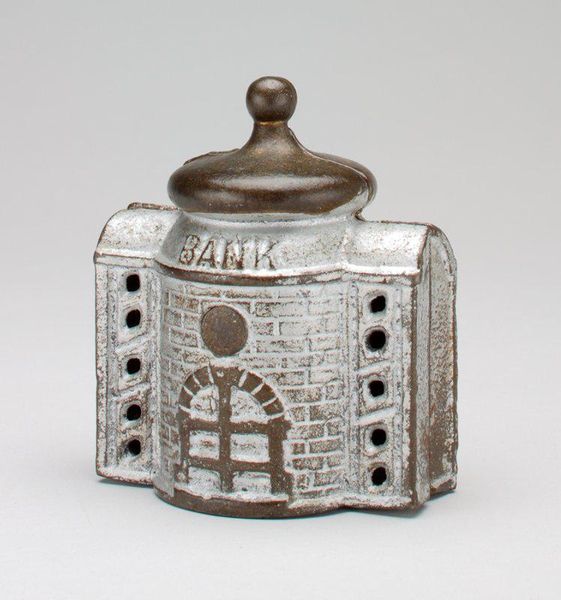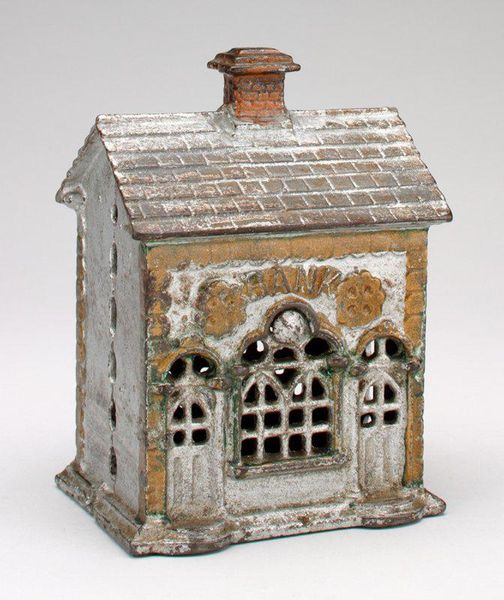
assemblage, metal, sculpture, architecture
#
assemblage
#
metal
#
sculpture
#
kitsch
#
form
#
geometric
#
sculpture
#
decorative-art
#
architecture
Dimensions: 4 3/4 x 4 7/8 x 2 3/8 in. (12.07 x 12.38 x 6.03 cm) (approximate)
Copyright: No Known Copyright
Editor: This is the "Domed Bank" still bank, made sometime between 1899 and 1934 by the A.C. Williams Company. It’s a small metal sculpture representing a building, like something out of a diorama. It's oddly charming in its miniaturization and seems to be suggesting something about societal values. What do you see in it? Curator: Beyond the decorative charm, this piece invites us to reflect on the historical context of early 20th-century America and the evolving relationship between architecture, finance, and domestic life. Consider the moment of its creation: burgeoning capitalism, anxieties around financial stability, and the growing influence of banks. This object subtly reinforces the ideology of saving. How might this miniature bank have shaped a child's understanding of money and their place within the economic system? Editor: So, it’s not just a cute object, but a tool for instilling certain values? Curator: Precisely. The architecture, the act of saving – it’s all tied to a very specific moment. Note also the form. Classical architecture— a traditional bank building— reduced to kitsch. Doesn't this raise questions about accessibility and who benefits from this system? What kind of social messages does this “Domed Bank” transmit, intended or not? Editor: That's a fascinating perspective. I was initially drawn to its aesthetic appeal, but understanding its historical and social context makes it so much richer. Curator: Exactly! Everyday objects often contain deeply ingrained cultural ideologies. We are conditioned to ignore them as historical constructs. Editor: I’ll definitely look at similar pieces in a different light now, considering their underlying messages. Curator: That's the goal! To foster critical engagement with the art around us and to connect historical objects with the lived realities of our contemporary moment.
Comments
No comments
Be the first to comment and join the conversation on the ultimate creative platform.
